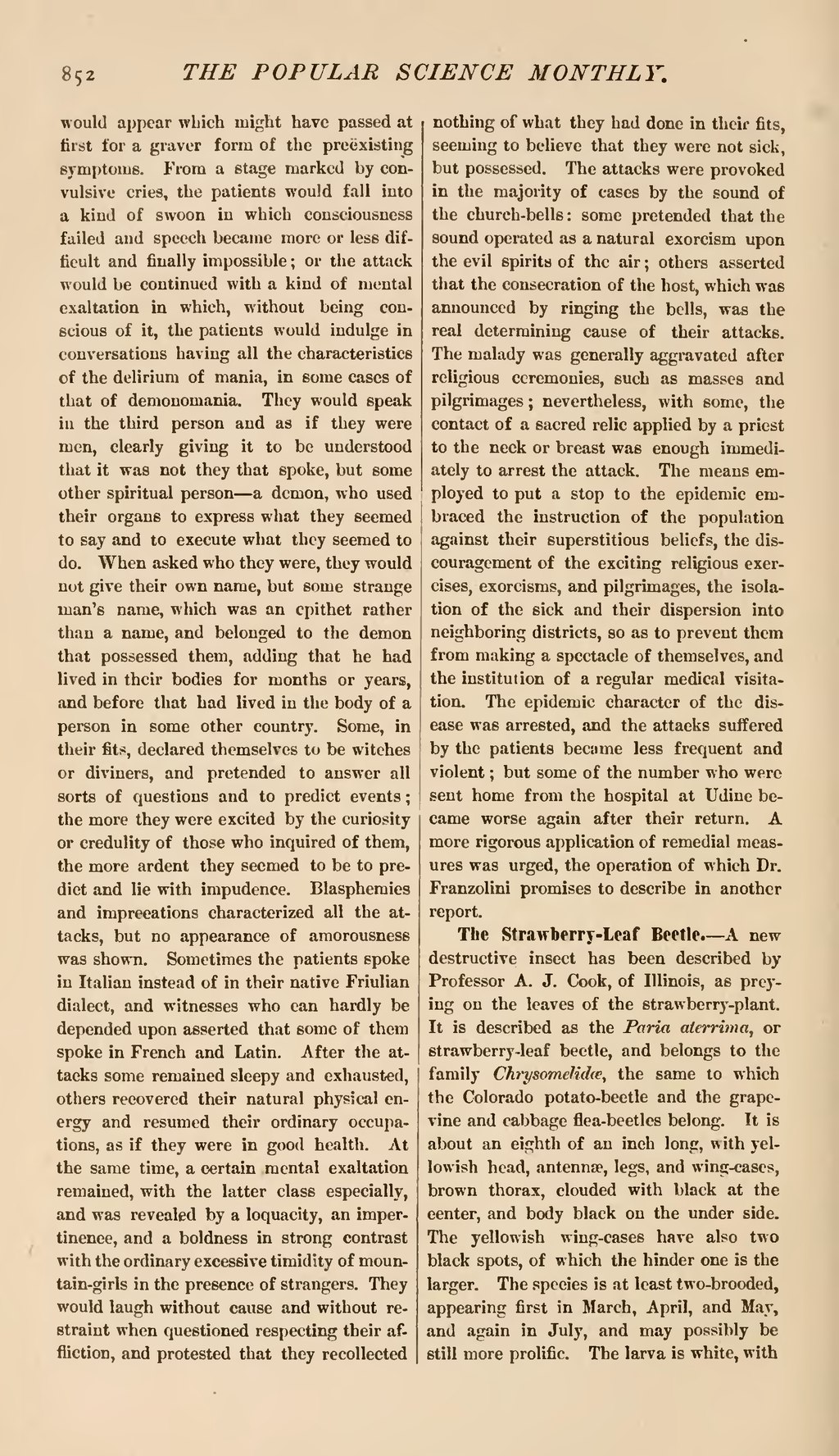would appear which might have passed at first for a graver form of the preëxisting symptoms. From a stage marked by convulsive cries, the patients would fall into a kind of swoon in which consciousness failed and speech became more or less difficult and finally impossible; or the attack would be continued with a kind of mental exaltation in which, without being conscious of it, the patients would indulge in conversations having all the characteristics of the delirium of mania, in some cases of that of demonomania. They would speak ill the third person and as if they were men, clearly giving it to be understood that it was not they that spoke, but some other spiritual person—a demon, who used their organs to express what they seemed to say and to execute what they seemed to do. When asked who they were, they would not give their own name, but some strange man's name, which was an epithet rather than a name, and belonged to the demon that possessed them, adding that he had lived in their bodies for months or years, and before that had lived in the body of a person in some other country. Some, in their fits, declared themselves to be witches or diviners, and pretended to answer all sorts of questions and to predict events; the more they were excited by the curiosity or credulity of those who inquired of them, the more ardent they seemed to be to predict and lie with impudence. Blasphemies and imprecations characterized all the attacks, but no appearance of amorousness was shown. Sometimes the patients spoke in Italian instead of in their native Friulian dialect, and witnesses who can hardly be depended upon asserted that some of them spoke in French and Latin. After the attacks some remained sleepy and exhausted, others recovered their natural physical energy and resumed their ordinary occupations, as if they were in good health. At the same time, a certain mental exaltation remained, with the latter class especially, and was revealed by a loquacity, an impertinence, and a boldness in strong contrast with the ordinary excessive timidity of mountain-girls in the presence of strangers. They would laugh without cause and without restraint when questioned respecting their affliction, and protested that they recollected nothing of what they had done in their fits, seeming to believe that they were not sick, but possessed. The attacks were provoked in the majority of cases by the sound of the church-bells: some pretended that the sound operated as a natural exorcism upon the evil spirits of the air; others asserted that the consecration of the host, which was announced by ringing the bells, was the real determining cause of their attacks. The malady was generally aggravated after religious ceremonies, such as masses and pilgrimages; nevertheless, with some, the contact of a sacred relic applied by a priest to the neck or breast was enough immediately to arrest the attack. The means employed to put a stop to the epidemic embraced the instruction of the population against their superstitious beliefs, the discouragement of the exciting religious exercises, exorcisms, and pilgrimages, the isolation of the sick and their dispersion into neighboring districts, so as to prevent them from making a spectacle of themselves, and the institution of a regular medical visitation. The epidemic character of the disease was arrested, and the attacks suffered by the patients became less frequent and violent; but some of the number who were sent home from the hospital at Udine became worse again after their return. A more rigorous application of remedial measures was urged, the operation of which Dr. Franzolini promises to describe in another report.
The Strawberry-Leaf Beetle.—A new destructive insect has been described by Professor A. J. Cook, of Illinois, as preying on the leaves of the strawberry-plant. It is described as the Paria aterrima, or strawberry-leaf beetle, and belongs to the family Chrysomelidæ, the same to which the Colorado potato-beetle and the grapevine and cabbage flea-beetles belong. It is about an eighth of an inch long, with yellowish head, antennæ, legs, and wing-cases, brown thorax, clouded with black at the center, and body black on the under side. The yellowish wing-cases have also two black spots, of which the hinder one is the larger. The species is at least two-brooded, appearing first in March, April, and May, and again in July, and may possibly be still more prolific. The larva is white, with
